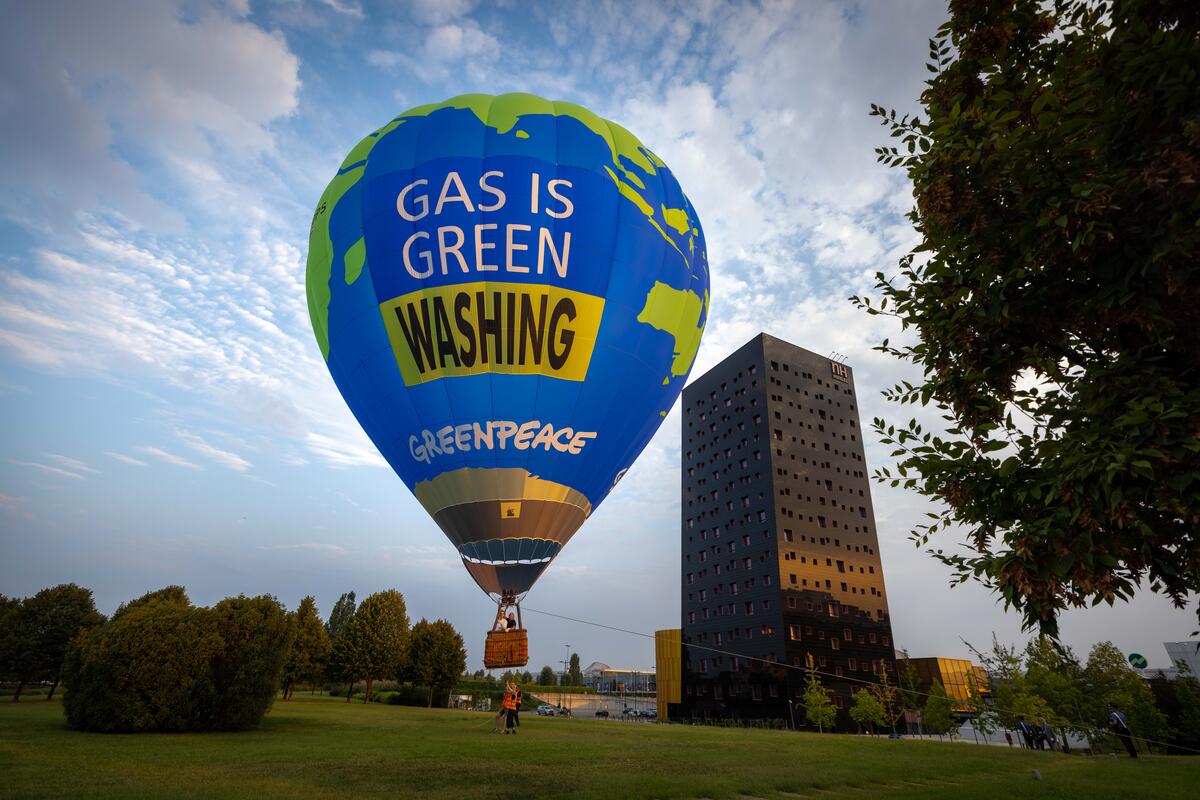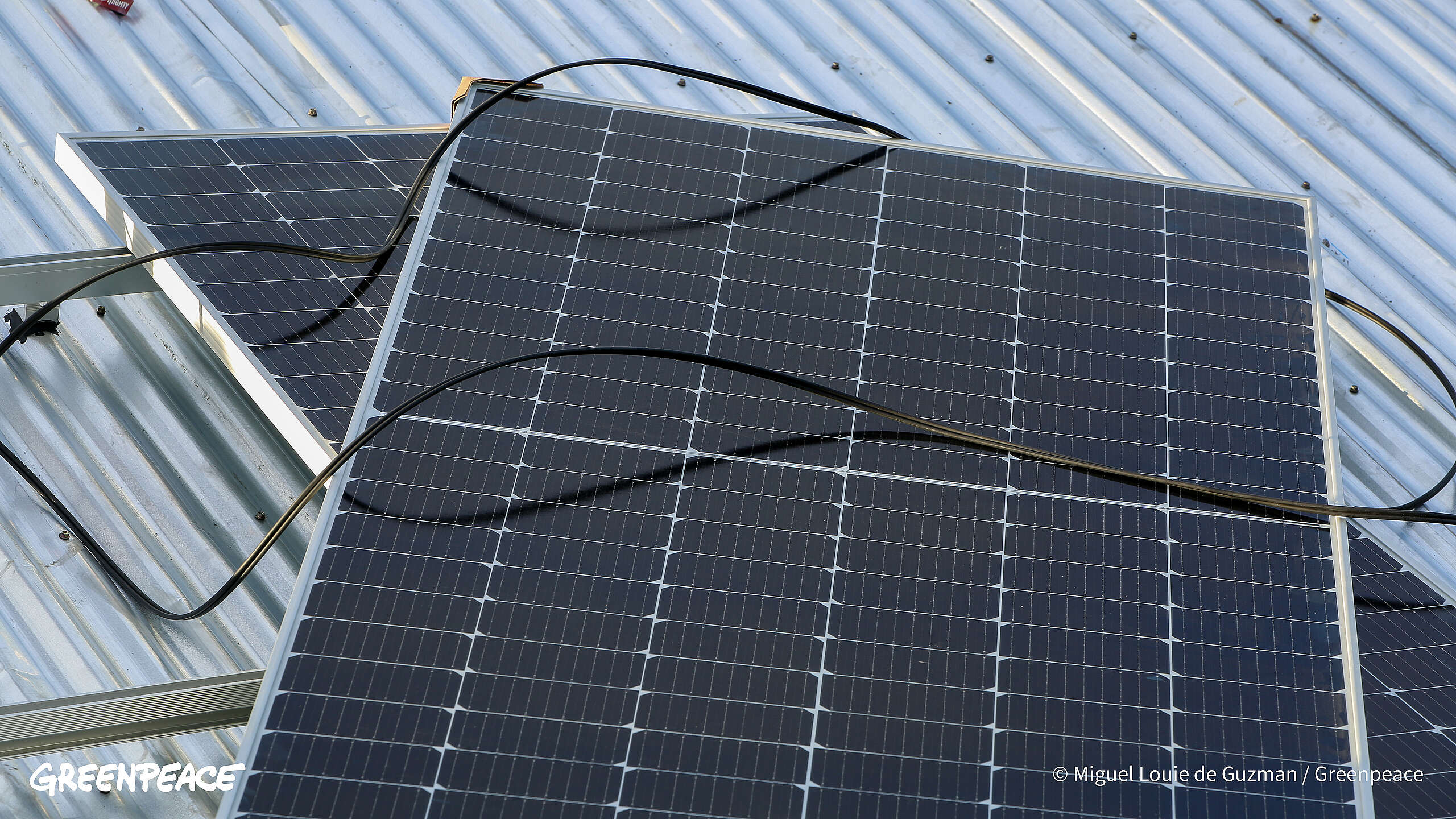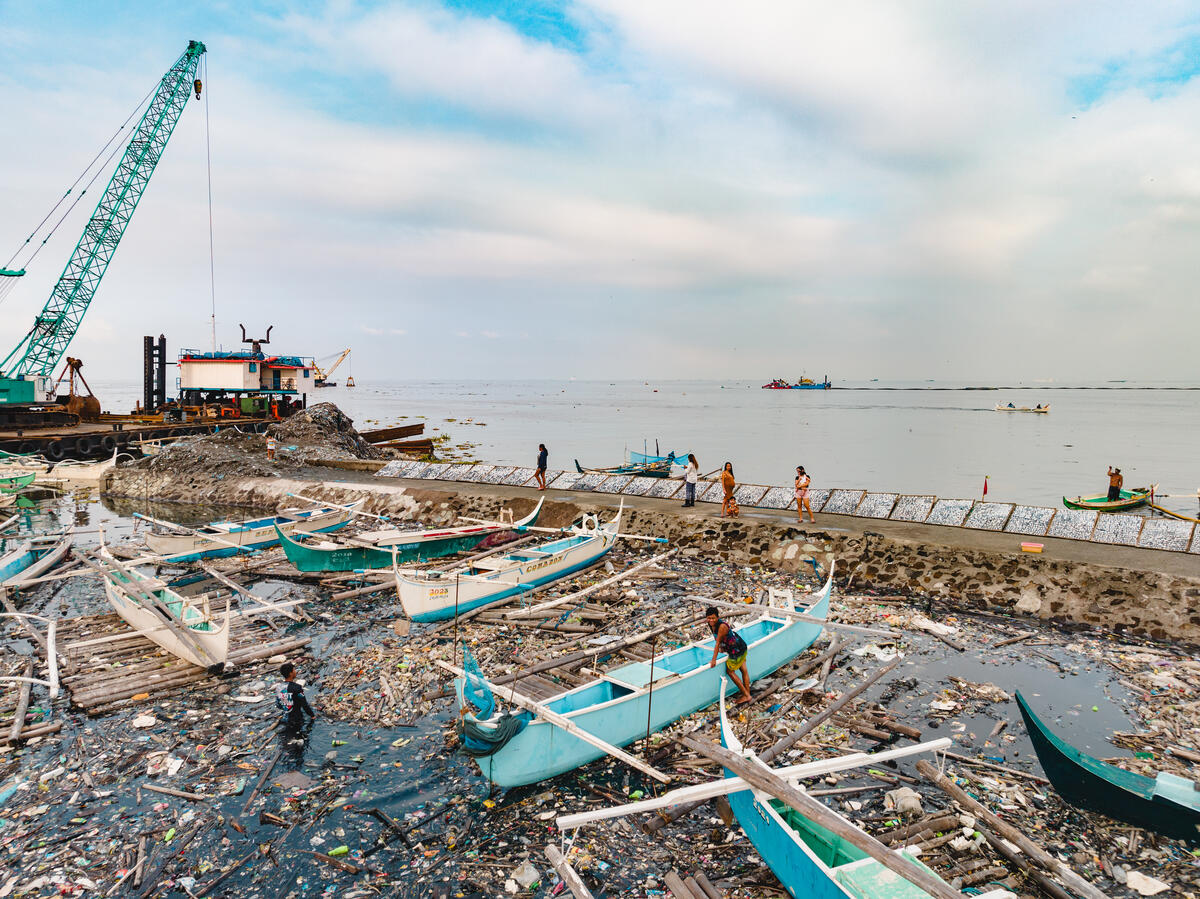Join us on our journey and take action to save our seas
There’s more to the sea than the endless stretch of blue water. This vast global ocean pulses around our world driving the natural forces which maintain life on our planet. And beneath the waves, the ocean is also pulsing with life—a staggering 80% of all the life on earth, in fact.
The oceans provide vital sources of protein, energy, minerals and other products of use the world over. The rolling of the sea across the planet creates over half our oxygen. It drives weather systems and natural flows of energy and nutrients around the world. It transports water masses many times greater than all the rivers on land combined.
In other words, the ocean keeps the Earth habitable. But around the world, the ocean is under threat. We need to protect it!
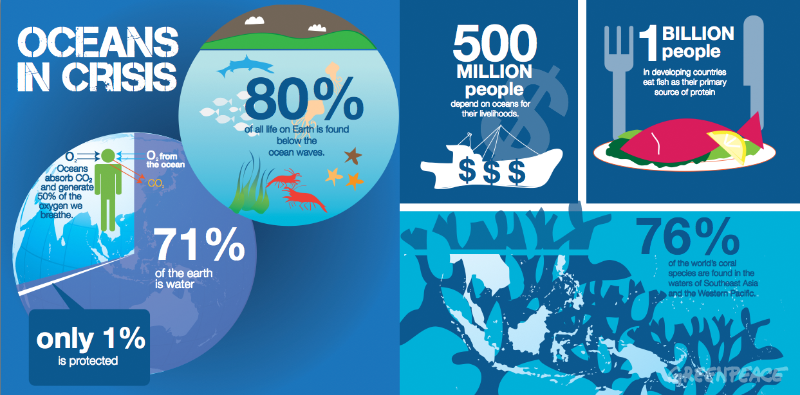
The Philippine Seas
Among the seas of the world, only a few are as rich and fertile as the Philippine Seas. Scientists have acknowledged the Philippine seas as a global center of marine biodiversity. The marine waters of the Philippines are home to more than 2,000 species of fish, 5,000 species of clams, mollusks and crustaceans, 22 species of whales and dolphins, 900 species of seaweeds, and 400 species of corals.
Our seas are an important area for marine mammals, sea turtles, and sharks and rays, including the whale shark — the biggest fish in ocean.
The Philippines is an oceans nation. More than 30 million Filipinos depend on the sea for survival. Since the beginning of time, Filipinos have lived and established their roots by the sea. We rely on the sea and its bounty for food and our livelihood.
Unfortunately, our seas are also among the most highly threatened in the world. The Philippine government acknowledges that destructive and illegal fishing, habitat degradation and pollution are the most pressing threats to the country’s marine ecosystems.
The Philippine Seas are in crisis — but we can save it!
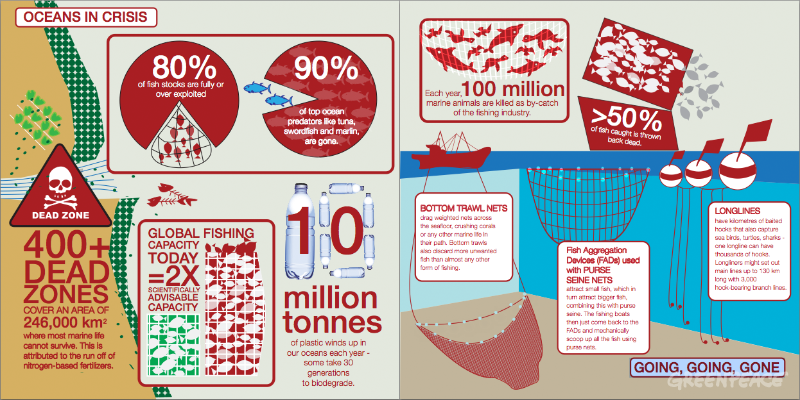
Hope for the Oceans
This year, the Greenpeace ship Esperanza is visiting the Philippines to sound the alarm on the crisis facing our seas.
‘Esperanza’ is the word ‘hope’ in Spanish. There is hope for the oceans—you!
Be an Ocean Defender and join the movement to protect our seas!
Defending Our Oceans 2006: A Retrospective
Last 2006, the Esperanza undertook its most ambitious expedition. For over a year, she sailed the world’s oceans, highlighting both the beauty of the high seas and the threats they face. The ship sailed from the Southern Oceans to the Atlantic, the Mediterranean to the Indian Ocean, to the Pacific and then back to the Antarctic.
In the Philippines, the ship highlighted marine pollution—from plastics to oil slicks to mine spills. The Esperanza also showed that there is hope and our oceans can recover with solutions such as marine reserves.
First stop: Manila Bay
Manila Bay is known for its spectacular sunsets. Its beauty is recounted in songs, poems, and stories of old. Historic battles have been fought and won in this body of water which once teemed with fish and other marine life.
But today, it is considered one of the most polluted bays in the world. Aside from the sludge, human sewage, and industrial waste that regularly find its way to this bay, its legendary beauty is now marred by a 19th century human invention: plastics.
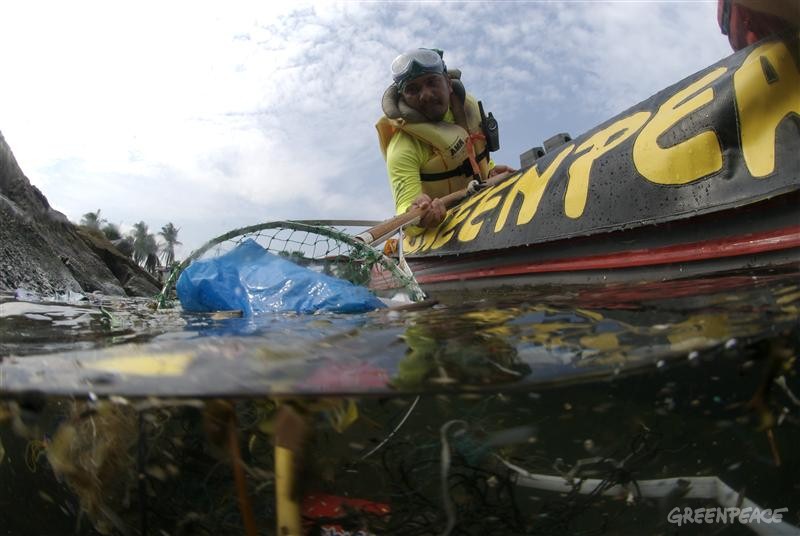
Manila Bay has become a huge floating plastics dump for the whole of Metro Manila and the other coastal provinces from the Bataan Peninsula down to Cavite.
In Manila Bay, the Esperanza and her crew exposed how plastic pollution end up trashing our seas. Together with EcoWaste coalition and Greenpeace volunteers, we conducted a waste survey which revealed that plastic trash makes up 70% of the floating rubbish.
Guimaras oil spill disaster
In Guimaras Province, the ship visited and documented ground zero of the worst oil spill on Philippine shores, the Petron oil spill disaster. Greenpeace volunteers and Esperanza crew assisted the Philippine coast guard in the delivery of relief goods and clean up supplies to Guimaras communities. We helped install booms around Taklong Island Marine Reserve and several barangays to help mitigate the damage. We also conducted underwater documentation to help scientists in their assessment of the damage caused by the slick on marine species.
Rapu Rapu Island
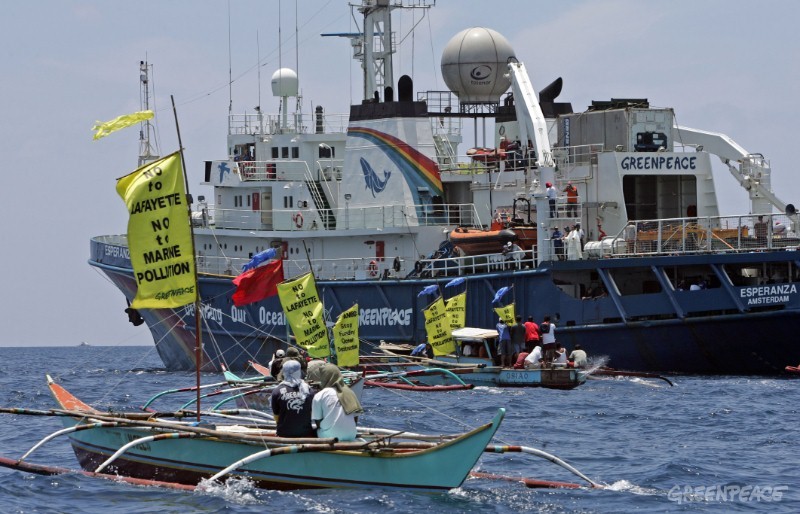 The Esperanza joined communities in Legazpi and Sorsogon in a dramatic flotilla and people’s march that confronted Lafayette’s mine operations in Rapu Rapu Island, Sorsogon Province. The mine’s toxic tailings have led to fish kills and continues to threaten the region’s marine treasures, including mangroves, sea grass beds, marine turtles and the whale shark, the biggest fish in the sea.
The Esperanza joined communities in Legazpi and Sorsogon in a dramatic flotilla and people’s march that confronted Lafayette’s mine operations in Rapu Rapu Island, Sorsogon Province. The mine’s toxic tailings have led to fish kills and continues to threaten the region’s marine treasures, including mangroves, sea grass beds, marine turtles and the whale shark, the biggest fish in the sea.
Our work during the ship tour in linking the community struggle with Banktrack, an NGO that advocates responsible and sustainable banking, was a major factor that caused a shut down the mining operations after several months.
Apo Island: A ray of hope for the oceans
While in the Philippines, the Esperanza also campaigned for the establishment of more marine reserves, and visited Apo Island in Dauin, Oriental Negros, acknowledged internationally as a model community-managed marine reserve. Apo Island presents a clear solution to restoring the health of the seas. Its reefs, now known for their astounding variety of marine life, were only three decades ago, substantially degraded by destructive fishing practices. The establishment of the reserve was a crucial factor to the impressive recovery.
Last stop: Cebu
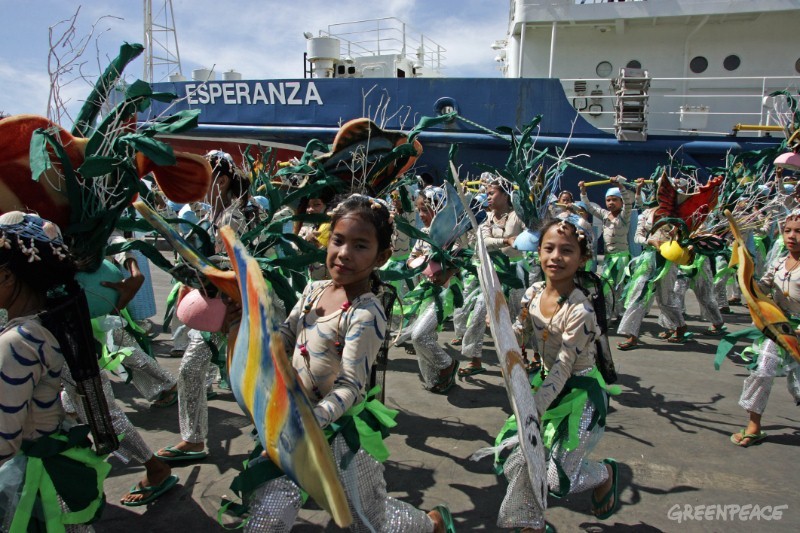 The Esperanza left the Philippines via Cebu at the start of the city’s Coastal Protection Month, citing that efforts, such as those in Dauin and Cebu, which advocate the protection of the seas, are crucial to insuring our and our oceans’ futures.
The Esperanza left the Philippines via Cebu at the start of the city’s Coastal Protection Month, citing that efforts, such as those in Dauin and Cebu, which advocate the protection of the seas, are crucial to insuring our and our oceans’ futures.
Since its visit to the Philippines in 2006, the Esperanza has worked in the Antarctic, to stop the slaughter of whales, as well as around the Pacific Ocean, to expose how the world’s tuna stocks are being rapidly overfished almost to extinction.
Ocean Defenders
Hundreds of thousands of people around the world have joined the Esperanza’s expedition as ‘Ocean Defenders,’ a group of people committed to making a difference to save the world’s seas.
The Esperanza is back in the beautiful Pacific to defend it from destructive and excessive fishing. Help her defend our oceans from the most pressing threats it faces today. Your voice is the most powerful force of change, sign up at www.defendouroceans.org

